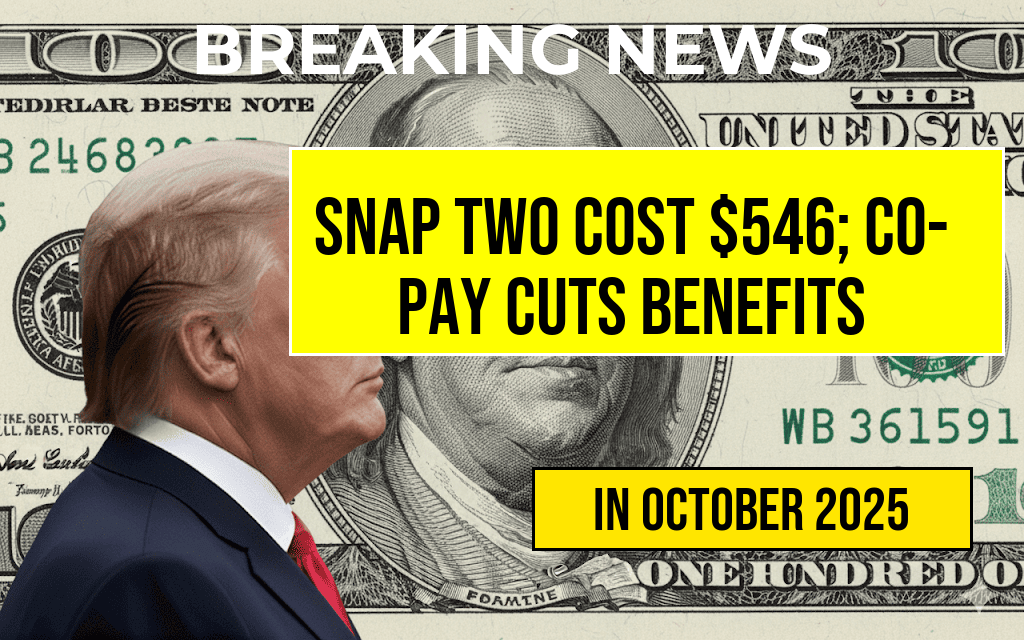Proposed State Co-Pay Changes Could Significantly Cut SNAP Benefits for Recipients
Recent proposals by state agencies aim to modify the way Supplemental Nutrition Assistance Program (SNAP) benefits are calculated, potentially reducing monthly assistance by over $50 for some recipients. Currently, the average SNAP benefit per household hovers around $546, but new co-pay strategies could reshape this landscape by introducing cost-sharing measures that may diminish overall support. While these proposals intend to streamline program costs and promote employment, critics warn that such changes could disproportionately impact vulnerable populations relying on SNAP for basic nutrition. The debate underscores the tension between budget management and safeguarding food security for millions of Americans.
Understanding the Current SNAP Framework and Proposed Changes
How SNAP Benefits Are Calculated
SNAP benefits are determined based on household income, size, and expenses, with the federal government setting guidelines that states administer locally. The average benefit is roughly $546 per month, but this figure varies widely depending on individual circumstances. Currently, recipients are not required to make co-payments for their benefits; instead, the program provides direct assistance to cover food costs.
State Co-Pay Proposals and Their Rationale
Several states are considering or have proposed implementing co-pay systems as a way to encourage employment and reduce dependency. Under these plans, eligible households might be required to contribute a small portion of their benefits or share in the cost of certain services. Advocates argue that such measures could incentivize work and help contain program costs amid tight state budgets.
However, opponents contend that these co-pay requirements could inadvertently lower the net benefits for recipients, especially those with limited income or facing unexpected expenses. For example, a household receiving $546 might be asked to contribute a portion of that amount, reducing their actual food purchasing power.
Financial Impact of Co-Pay Strategies on SNAP Recipients
| Current Average Benefit | Estimated Co-Pay Contribution | Projected New Benefit |
|---|---|---|
| $546 | $50 | $496 |
In practical terms, a $50 reduction from the average benefit represents a significant decrease in purchasing power for families already living paycheck to paycheck. For many, this could mean sacrificing nutritious food options or reducing the number of meals per day. The impact becomes even more pronounced in households with multiple dependents, where the difference could amount to hundreds of dollars less each month for essential groceries.
Broader Implications and Stakeholder Responses
Policy Goals Versus Food Security Concerns
Proponents of co-pay proposals emphasize the importance of fostering self-sufficiency and reducing long-term government expenditure. They argue that small contributions can motivate beneficiaries to seek employment or increase their income levels, ultimately decreasing reliance on public assistance. According to some policymakers, these measures could lead to more sustainable programs aligned with fiscal responsibility.
Conversely, organizations representing food banks, social services, and advocacy groups warn that such changes risk pushing vulnerable populations into deeper food insecurity. “Reducing SNAP benefits through co-pay requirements could force families to choose between paying for rent or buying nutritious food,” said Feeding America spokesperson Jeanette Franks. “This undermines the very purpose of the program.”
Legal and Administrative Challenges
Implementing co-pay systems involves complex administrative adjustments and legal considerations. States must ensure compliance with federal guidelines and avoid unintended penalties or disparities. Some legal experts point out that any co-pay requirement must be carefully structured to prevent undue hardship while aligning with federal laws governing SNAP eligibility and benefits.
Potential Outcomes and Next Steps
As discussions continue at the state level, the possibility of benefit reductions remains contentious. If adopted, the changes could lead to an immediate decrease in benefits for thousands of households, translating into less food security for many. Conversely, some argue that these adjustments could help optimize program efficiency if balanced with safeguards for the most vulnerable.
Federal oversight and public input will likely play roles in shaping final policy decisions. Meanwhile, advocacy groups urge recipients to stay informed about upcoming hearings and to participate in public comment opportunities to voice concerns about potential cuts.
For more information on SNAP eligibility and current benefit calculations, visit USDA Food and Nutrition Service.
Frequently Asked Questions
Question
What is the current cost of SNAP for two people?
Question
How might state co-pay proposals impact SNAP benefits?
Question
By how much could SNAP benefits be reduced due to proposed co-payments?
Question
What are the potential benefits of implementing co-pay proposals for SNAP recipients?
Question
Why are policymakers considering co-payments for SNAP, and what are the implications for households?









